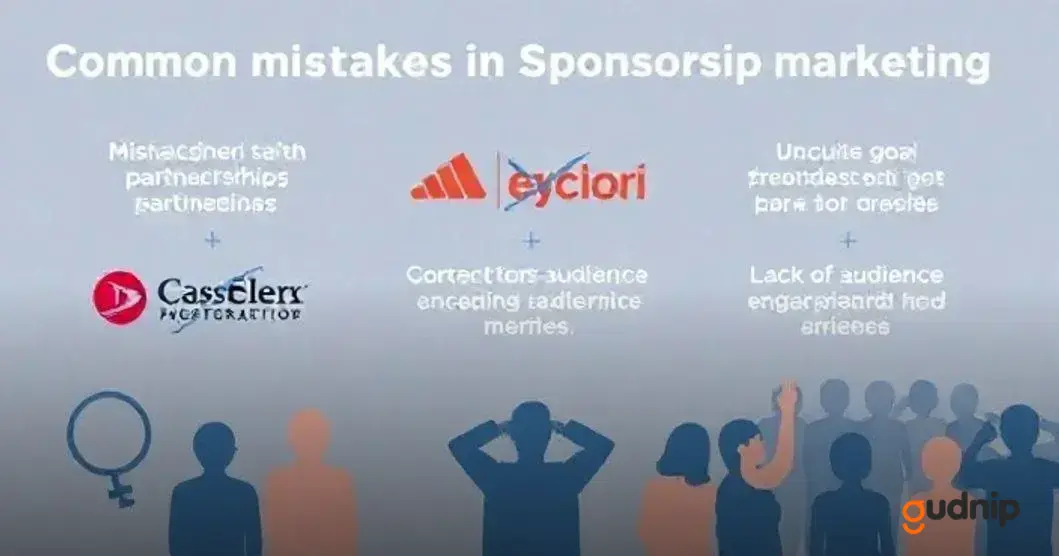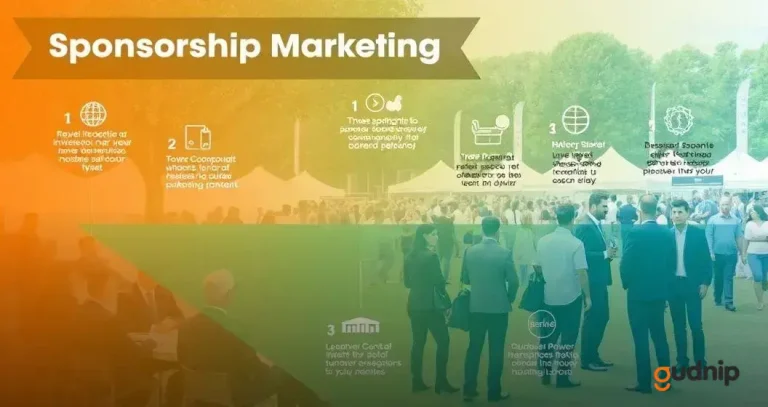Sponsorship marketing for investment is transforming how brands engage their audience. It offers unique opportunities to showcase your business while supporting events or causes. Brands can see significant benefits by aligning with the right partners.
This strategy not only boosts visibility but can also lead to increased sales and customer loyalty. By leveraging sponsorship, companies position themselves favorably within their industry.
Ready to see how sponsorship can redefine your investment approach? Keep reading to discover innovative strategies that lead to success.
Understanding Sponsorship Marketing
Understanding sponsorship marketing is key for any brand looking to grow. It involves a partnership between a business and an event or organization. The goal is to create a win-win situation where both parties benefit.
In sponsorship marketing, brands provide support, whether financial or in-kind, to events or causes they believe in. In return, they gain visibility and connect with a targeted audience, creating valuable relationships.
This form of marketing is much more than just placing a logo. It’s about aligning values and finding common ground, which leads to increased brand loyalty and investment opportunities.
Benefits of Sponsorship in Investment
The benefits of sponsorship in investment are significant for both brands and events. Firstly, sponsorship can increase a brand’s visibility. When a business sponsors a popular event, their name is seen by many people, leading to greater recognition and awareness.
Secondly, sponsoring events helps build trust. When a brand supports a cause or event, it shows they care about the community. This builds a strong connection with consumers, which can lead to increased customer loyalty.
Finally, effective sponsorship can drive sales. By connecting with a targeted audience, brands can promote their products or services in a meaningful way. This often results in higher sales and better investment returns over time.
Types of Sponsorship Deals
Types of sponsorship deals vary widely, allowing brands to choose what suits them best. One popular type is **cash sponsorship**, where companies provide financial support for events or programs in exchange for promotional opportunities. This type of deal helps events fund their activities while boosting the sponsor’s visibility.
Another common type is **in-kind sponsorship**, which involves providing goods or services instead of cash. For example, a hotel might offer free accommodations for event organizers. This type of sponsorship can lead to strong partnerships and delivers mutual benefits.
Lastly, there’s **media sponsorship**, where a brand partners with a media outlet. This often involves advertising and promotional activities. Brands gain exposure through various channels like TV, radio, or digital platforms. This deal type helps both parties reach wider audiences effectively.
How to Choose the Right Partner

Choosing the right partner for sponsorship is crucial for success. Start by identifying potential partners whose values align with your brand. Look for organizations that share similar goals and connect with your target audience. This alignment can create a stronger partnership that benefits both parties.
Next, consider the reach and influence of your potential partner. Investigate their audience demographics and engagement levels. A partner with a broad and engaged audience can significantly enhance your brand’s visibility and help you achieve your investment goals.
Lastly, assess the partner’s reputation. It’s important to partner with organizations known for their integrity and positive impact. A good reputation can enhance your brand’s image and build trust with consumers, making your sponsorship more effective in the long run.
Measuring ROI from Sponsorship
Measuring ROI from sponsorship is essential for understanding its value. Start by defining clear goals for your sponsorship. What do you want to achieve? Whether it’s increased brand awareness or sales, having specific targets allows you to gather relevant data.
Next, gather data to assess the outcomes. This can include tracking website traffic, social media engagement, and sales growth. Surveys can also provide feedback on how the audience perceives your brand after the sponsorship event.
Finally, analyze your findings to calculate ROI. Compare the benefits gained from sponsorship against the costs incurred. A positive ROI indicates a successful sponsorship, while negative results can guide you to make better choices in the future.
Creating Effective Sponsorship Packages
Creating effective sponsorship packages is vital for attracting partners. Start by understanding what potential sponsors want. Outline clear benefits such as visibility, marketing opportunities, and networking. The more value you can provide, the more attractive your package will be.
Include various sponsorship levels in your packages. This allows partners to choose what fits their budget and goals. For example, you might offer tiered options with different benefits, such as logo placement, social media mentions, or exclusive access to events. This flexibility can attract a wider range of sponsors.
Finally, make sure to communicate your expectations clearly. Describe what you need from the sponsor in return, whether it’s financial support or in-kind contributions. A transparent agreement sets the stage for a successful partnership.
Examples of Successful Sponsorships
One great example of a successful sponsorship is the partnership between Coca-Cola and the Olympic Games. Coca-Cola has sponsored the Olympics for over 90 years, providing financial support and refreshing drinks to millions of attendees. This long-term relationship helps Coca-Cola reach a global audience, and the association boosts their brand image as a supporter of healthy, active lifestyles.
Another successful example is Red Bull’s sponsorship of extreme sports events. By hosting events like the Red Bull Air Race, they align their brand with high-energy activities and attract their target audience. This unique approach has made Red Bull a household name in sports marketing, connecting them with thrill-seekers and adventure lovers worldwide.
Finally, the partnership between Nike and various sports leagues exemplifies effective sponsorship. Nike provides gear and apparel to teams, enhancing their visibility through uniform branding. This strategy not only promotes Nike’s products but also allows them to build strong connections with fans and athletes alike, driving sales and loyalty.
Common Mistakes in Sponsorship Marketing

One common mistake in sponsorship marketing is not aligning with the right partners. Brands may rush to partner with popular events without considering their target audience. This misalignment can lead to ineffective marketing and wasted resources, as the intended audience may not respond well to the sponsorship.
Another mistake is failing to set clear goals before starting a sponsorship. Without defined objectives, it becomes challenging to measure success. Brands need to know what they want to achieve—whether it’s increasing brand awareness, driving sales, or enhancing their reputation—so they can track their progress effectively.
Lastly, disregarding the need for engagement can hurt sponsorship efforts. Simply displaying a logo is not enough. Brands should actively participate in events and connect with attendees. Engaging with the audience can create lasting impressions and strengthen brand loyalty, making sponsorships much more effective.
Future Trends in Sponsorship Marketing
Future trends in sponsorship marketing are leaning towards digital transformation. Many brands are embracing new technologies, including virtual and augmented reality experiences. These immersive methods allow brands to engage their audience in unique ways, enhancing their sponsorship impact and reaching more viewers online.
Another trend is the rise of cause-related sponsorships. Consumers are becoming more socially conscious, supporting brands that align with their values. Companies are increasingly seeking to partner with events or organizations that promote sustainability or social causes, creating a greater emotional connection with their audience.
Finally, data-driven decision-making is becoming essential in sponsorship marketing. Brands are using analytics to track the effectiveness of their sponsorship efforts. By measuring engagement and other key performance indicators, they can fine-tune their strategies for better results and maximize their return on investment.




